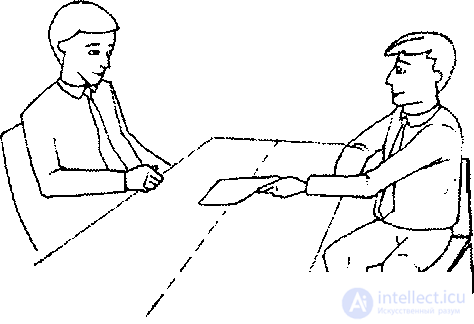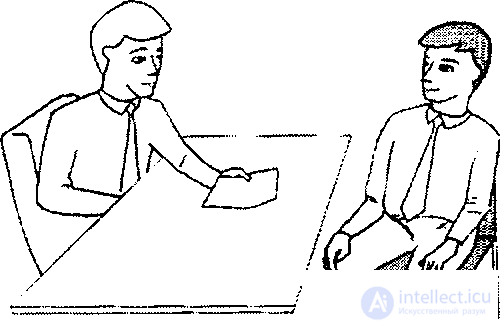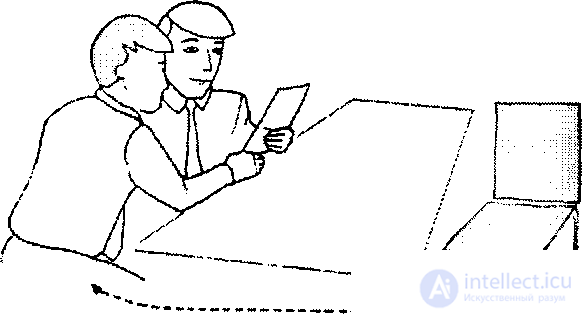When people sit opposite each other at the table, they subconsciously divide the table into two equal zones. Each person perceives the half of the table nearest to him as his own, and any violation of a person’s border is annoying.
However, sometimes it is difficult or impossible to take an angular position. Suppose you have a folder, a book, papers, or samples that you need to show to a person sitting at a rectangular table. Your task is to take the most advantageous position for the presentation. First put your item on the table. Your interlocutor will either bend down to examine him, or transfer him to his side, or return him back to your territory.

The paper is in the area of separation of territories If the interviewee bends down to look at the item, but does not take it, you can hold the presentation from the same place, because you are not invited to go to the other side of the table. In this case, turn around at a 45 degree angle and continue. If the interlocutor takes the subject to his side, this will give you the opportunity to ask permission to go to the interlocutor's territory and take the corner position or cooperation position.

The transfer of the subject to its territory speaks of non-verbal agreement with the proposal 
Non-verbal consent to invade your space If the person returns the item to your territory, stay on your side. Never invade the territory of another person unless you receive verbal or non-verbal permission for such actions. Otherwise, you will set the interlocutor against yourself.



Comments
To leave a comment
Body language
Terms: Body language